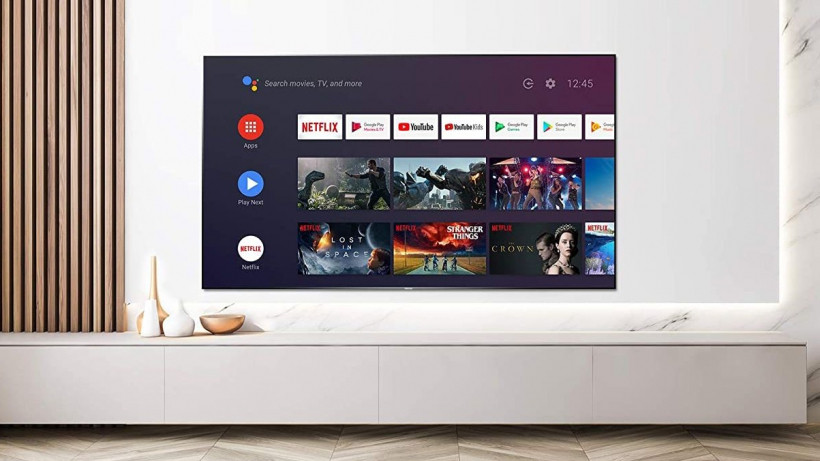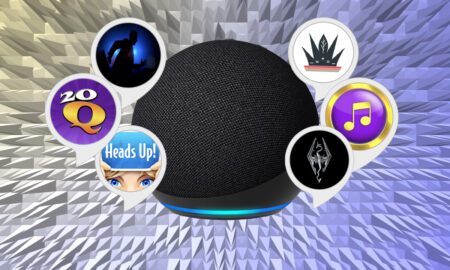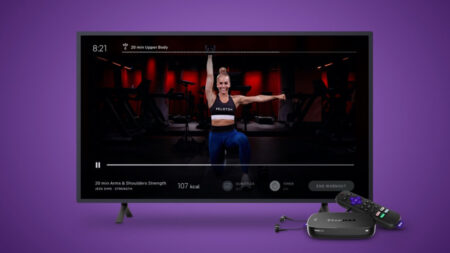HDR? WebOS? Android TV? Which 4K TVs combine great picture quality with streaming and smarts?
The humble gogglebox is humble no more. Almost any television worth its salt these days combines its core ‘show pictures, make sounds’ capabilities with some degree of smart functionality.
From accessing the Internet for streaming movies and TV shows, to letting you control your TV just by talking to it, smart functionality has put the television at the heart of the modern home like never before, with a range of top smart TV platforms and operating systems now on offer.
At the same time, we’ve seen nothing short of a revolution in picture quality over the past five years. First there was 4K resolution, offering four times as much detail as the previous high definition TVs. Then there was the even more game-changing high dynamic range (HDR) technology, with its expanded brightness range and attendant wide color range technology.
The arrival of these new picture technologies has caused a flurry of innovation in the TV hardware world. OLED TVs have discovered ways to keep finding more HDR-friendly brightness to go with their innate contrast advantages.
And LCD TVs just keep getting better at finding ways to deliver more local control over their external backlight systems, so that they can partner their innate brightness advantage with better contrast.
What is a smart TV?
A smart TV is one that connects to the internet, usually via Wi-Fi, and offers up a whole world of streaming and catch-up services alongside your live TV offering. Different platforms will offer different services, so while Amazon Prime Video, Hulu and Netflix are largely available, it’s worth checking that the services you use most are included in the platform you’re looking at.
As well as added entertainment content, smart TVs now often pack some level of smart home controls – and voice assistants such as Google Assistant or Amazon Alexa – alongside web browsing, games and music streaming.
HDMI explained: What you need to know and what is the best HDMI cable?
While just a few years ago, smart TVs only made up the pricier end of the market, you’d now be hard stretched to find a TV without smart capabilities, running on one of the best TV OS platforms. That means it’s even more important to make sure you buy one that suits your needs.
You can, of course, also just plug a smart streaming stick into a TVs HDMI port to make it smart as well.
What about picture quality?
Of course, the main consideration when buying a TV is always going to be picture quality. So it’s handy that we’ve been seriously spoiled in this respect over the past couple of years.
Pretty much any TV you buy, for instance, will now carry a native 4K resolution, providing four times as many pixels of detail as the previous HD models.
A growing number of TVs are even starting to appear equipped with 8K resolutions, which offer four times as many pixels again as 4K.
However, at the time of writing – and it seems unlikely this will change any time soon – there’s practically no native 8K resolution content to feed these 8K TVs with. As a result, 8K TVs are left having to apply processing to 4K and HD images to turn them into 8K. Before everyone immediately dismisses 8K TVs on this basis, though, it’s important to say that new developments in ‘AI’ image processing are delivering upscaling results now that are world’s better than those we used to see when 4K TVs first appeared.
We’ve now also got high dynamic range (HDR) to ogle. If you not heard of this, it hugely expands the range of light an image carries, giving you a much punchier, more lifelike picture than anything TVs have been capable of before. Especially when, as is pretty much always the case, HDR images are accompanied by wider color ranges than you get with normal ‘standard dynamic range’ content.
Not quite all TVs support HDR yet, but the majority do. Bear in mind, though, that getting the best out of HDR requires a TV to deliver lots of brightness, good contrast and a wider color gamut. A combination that relatively cheap TVs struggle with.
Be aware, too, that there’s not just one HDR format on offer. The HDR10 format is standard for all HDR TVs, but you should also look to your TV to support the broadcast-friendly HLG format too. You’ll need this, for instance, to unlock HDR from the BBC iPlayer or Sky.
In an ideal world, finally, Dolby Vision and HDR10+ are really worth looking out for as well. These are the newest, most advanced versions of HDR, which improve the picture on a scene-by-scene basis, rather than applying one setting to the whole film or TV show. It makes a big difference, and to futureproof your TV, you’d be wise to seek them out.
In terms of content available, Dolby Vision is the leading format of the two at the moment, with UHD support from Netflix, Disney+ and Apple TV+, as well as many 4K Blu-rays. HDR10+ is still playing catch up, with a relatively small number of physical discs, but support on all HDR content from Amazon Prime Video.
Some TVs, like Philips and Panasonic, support both of these premium ‘active’ HDR formats, whereas some brands including Samsung have sided with HDR10+ only, while LG and Sony have gone with Dolby Vision.
One other key decision you’ll have to make when buying a TV is whether to go for an OLED TV or an LCD TV.
With OLED, every single pixel within the picture is able to create its own light. This means a few things – your TV will typically be slimmer as there’s no need for a backlight, blacks will be blacker and color will be more precise. While OLED TVs are gradually getting cheaper, though, they’re pricey versus most LCD TVs.
LCD, often now referred to as LED, meanwhile, doesn’t have the pixel for pixel lighting that OLED does. Instead it has to share external lighting across many pixels at once. This obviously means it can’t compete with OLED when it comes to local contrast.
Premium LCD TVs can go much brighter than OLED TVs can, though, which is helpful when it comes to delivering impactful HDR and expanded color ranges.
Furthermore, technologies such as local dimming, where different zones of the LEDs illuminating the screen can simultaneously output different amounts of light, are constantly improving LCD TV’s contrast performance.
This is particularly the case in 2021, thanks to the arrival of new Mini LED TVs. These use much smaller LED lights, meaning that more of them can be fitted into the same screen area. And they typically enjoy many more local dimming zones (areas of the backlight that can be instructed to output different levels of light to their neighbours) than you get with regular LED sets.
Now you know what to look out for in picture quality, read on for the lowdown on all the major smart TV platforms. It’s worth mentioning that you may find some smaller, more proprietary offerings from lesser known brands, but for a good, solid smart experience, we would largely recommend sticking with one of the below.
The best smart TV platforms
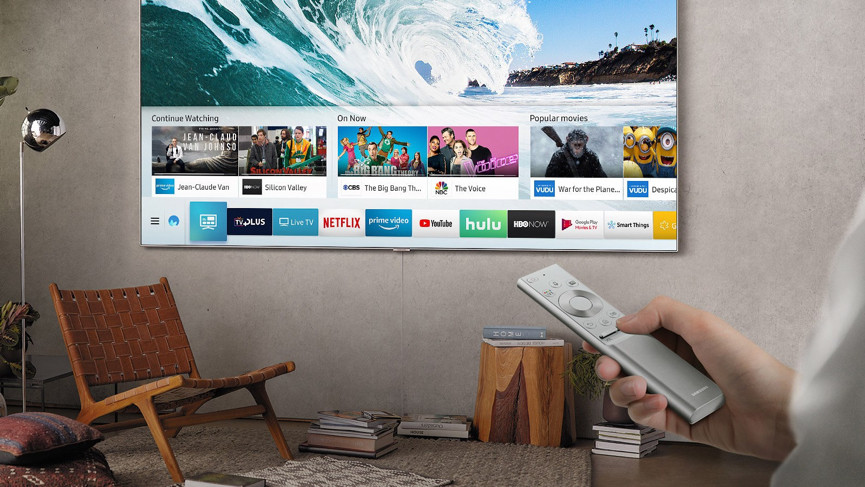
Samsung (Tizen)
Despite being derived from the Tizen OS originally designed for smartphones, that latest version of Samsung’s Eden smart TV platform is now impressively honed for TV use.
Its home page, for starters, only takes over the bottom quarter of the screen, leaving you free to keep watching TV while you browse the masses of content its menus contain.
Taking a leaf out of the Apple TV playbook, Eden adopts a two-tier menu approach. Along the bottom you get an easily customizable row of icons showing the different content sources – Netflix, Amazon, YouTube etc. – installed on your set.
Highlight one of these, though, and a second tier pops up showing direct links to specific content (films, TV shows etc.) available from the source you’ve selected on the bottom deck. Or at least that’s the case if the selected content provider has worked with Samsung to enable this handy short-cut feature.
With some apps, the second deck even delivers personalized links, such as access to the next episodes of shows you’ve been watching on Netflix. Or there may be links to the most popular and/or most recent shows.
The most recent version of Eden lets you scroll down from the content deck that appears on the home screen to access further content ‘shelves’, giving you another option forgetting to content more quickly without the system taking up any extra screen space.
The Eden system also provides a content aggregation system called TV Plus, which tries to combine TV listings with on demand content in one straightforward menu.
Samsung’s smart platform is strong on content. It offers pretty much every video platform of note – including the relatively new Apple TV and Disney+ apps, and all of the catch-up apps.
Guide: What is Google TV
Eden TVs will play 4K and HDR video from any streaming apps that support these key picture quality technologies. The only exception is content created in the Dolby Vision HDR format. This adds scene by scene picture information to help TVs produce a more dynamic picture, and is supported by the Apple TV, Netflix, Amazon and Rakuten services among others.
No Samsung TVs support Dolby Vision, though, so they ‘downgrade’ Dolby Vision content to the industry standard HDR10 HDR format, which doesn’t have scene by scene data.
While Samsung doesn’t support Dolby Vision, it does support the similar HDR10+ system. Amazon Prime Video and Rakuten TV, though, are the only streaming services currently carrying HDR10+ streams.
Samsung’s smart TVs are excellent options, though, for sharing content from your other smart devices – both Android and Apple. Especially now they carry the Apple TV app and support Apple Airplay 2.
Finally, Samsung’s smart TVs now support strong voice recognition features. Samsung’s Bixby engine, Amazon Alexa and Google Assistant are all available as options for having a chat with your television.
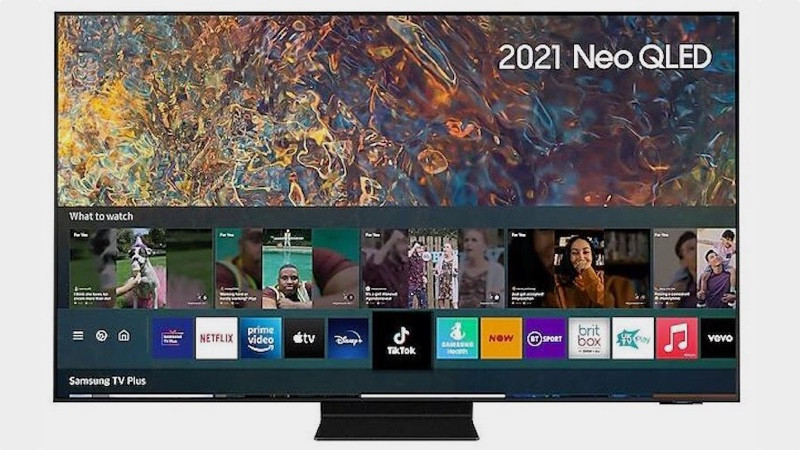
Check out… Samsung QN95A
The QN95As are Samsung’s latest flagship 4K TV range. This is even more significant than usual for the LCD TV world since they’re the first TVs Samsung has released that use Mini LED backlighting.
Switching to much tinier LEDs means the QN95As can be significantly slimmer than Samsung LED TVs of the past. Add this to the incredibly narrow frame wrapped around their screens and a gleaming metal finish and you’ve got arguably the flat-out most attractive LCD TVs on the market today.
The switch to Mini LED lighting has even more impact on picture quality, though. Samsung has long delivered arguably the best contrast in the LCD TV world, but Mini LED takes things to a whole new level. Black colors now look pretty much as black as they get on OLED TVs, while having more than 700 dimming zones to work with means that Samsung can now combine these inky blacks with much more brightness for light image highlights than was possible before without causing distracting backlight ‘clouds’. As a result, HDR pictures look much more dynamic and impressive.
Being able to combine massive amounts of brightness with Quantum Dot ‘QLED’ technology without compromising contrast also helps the QN95As serve up a huge volume of color, rounding out a stunningly impactful demonstration of just what HDR can do.
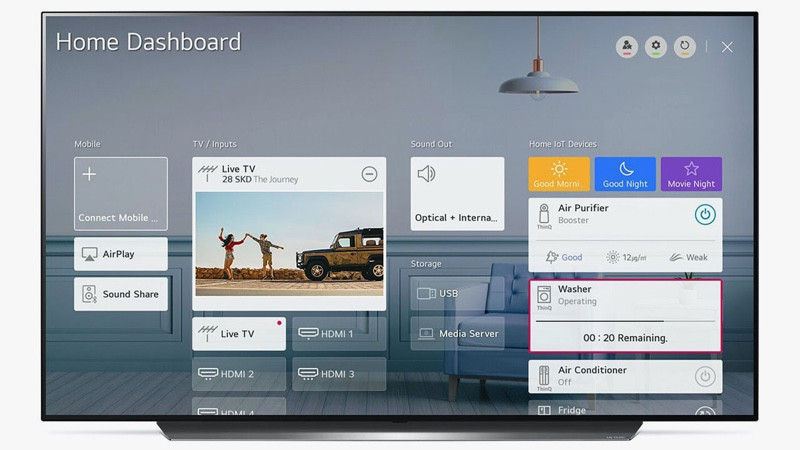
LG (webOS)
LG’s webOS platform was the first smart TV system to be truly and exhaustively designed and tested for use on TVs rather than other types of smart device. As a result, it’s won praise from just about every quarter for many years now. The latest take on webOS, though, marks a major departure from what’s gone before – and while the direction of travel may ultimately turn out to be correct, right now the change isn’t a complete success.
The differences kick in as soon as you call up the new home screen, which now occupies the whole screen rather than just superimposing a tidy row of app icons over the bottom edge of the picture. This means you can no longer keep watching TV while you browse the smart menus, and potentially makes the experience feel more overwhelming for users not very familiar with smart interfaces.
The new webOS system doesn’t currently make the best use of its new full-screen real estate, either. Some of the link boxes that take up a large chunk of the available screen space won’t be much use for most users – and opportunities for reorganising the home screen layout to suit your needs better are limited.
LG has added a bunch of ‘shelves’ you can scroll down from the home screen. While this isn’t a bad idea in itself, at the moment the services supported by these shelves are limited (there isn’t one for Netflix, for instance), and again there’s currently no facility for adjusting the shelf running order, or adding/deleting shelves you want/don’t want.
All in all, the presentation feels like a backwards step that adds unnecessary complication without giving users the same freedom the old webOS approach used to provide. What’s more, the new system seems to put quite a bit of strain on the processors in LG’s latest TV, causing menus to run a little sluggishly.
There are, though, some good things about the new webOS. The new Universal search engine, for instance, is both remarkably comprehensive in the range of places it looks for answers to your search requests, and outstanding in the way it presents the results. LG’s latest TVs continue to be excellent when it comes to voice recognition/control, too.
A large section devoted to recommended content at the heart of the new home screen reveals the main reason for LG’s major webOS reboot. This features content that LG’s learning algorithms think you may want to watch based on analysis of your viewing habits, chiming with the way most of us are spending more and more time watching on-demand content rather than sticking to broadcast schedules.
Inevitably the learning algorithms throw up a few random-looking results in a new TV’s early stages, they do start to show genuine signs of intelligence and usefulness fairly quickly.
If you are familiar with and a fan of the old webOS approach, the familiar row of app icons is helpfully still there along the bottom of the new home screen. It’s just surrounded by a lot of other stuff now. And handily this app ‘row’ is still easily customised when it comes to app running order.
More good news finds the latest webOS system being very comprehensive with the key video streaming services it covers. These include Freeview Play again, thankfully, after the umbrella service for the catch up apps of all of the UK’s key terrestrial broadcasts mysteriously went AWOL on LG’s 2020 TVs.
LG’s history with smart TV platforms makes us confident that the radically new webOS will ultimately become another success. But right now it feels like a work in progress.
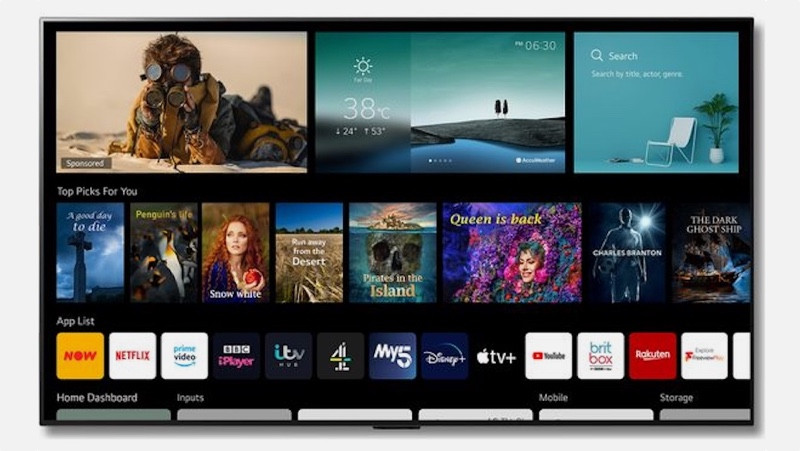
Check out… LG G1
For the past few years LG’s C series models have been easily the best all round sets in the brand’s outstanding OLED TV ranges. For 2021, though, our money’s on the step-up G1 series.
The key thing about the G1s is that they actually benefit from a different core OLED panel to the C1 series. A different panel designed to deliver more brightness than regular OLED TV panels.
This makes the G1s capable of unlocking more of the image quality thrills associated with HDR picture technology than regular OLED TVs can. And they’re able to do this, moreover, without compromising the stunning, pixel-level local contrast OLED is famous for. So you get pictures that look gloriously intense, vibrant, three-dimensional and dynamic in a way that no LG OLED TV before has managed to.
The difference between the G1 and C1 is not absolutely huge, to be clear. But it’s definitely there – especially if you’re into gaming on one of the latest HDR-capable consoles or PC cards.
The G1 boasts exquisite looks too thanks to its wall hanging-friendly Gallery design, while its AI Sound Pro processor ensures that it’s no slouch on the audio front.
If all this isn’t enough to tempt you already, LG is underscoring its faith in its new ‘hero’ OLED models with an exclusive five-year panel warranty on every G1 it sells.
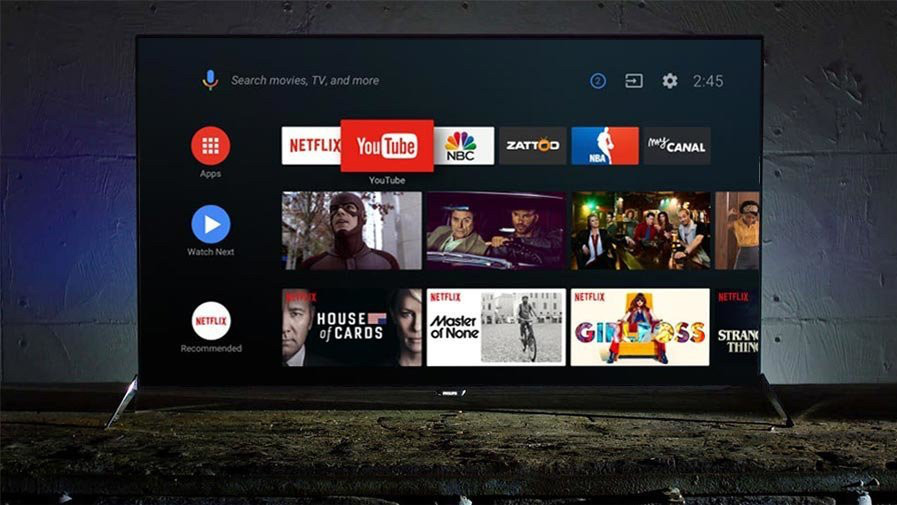
Sony (Google TV)
Sony turned to Google’s Android TV platform for its smart features in 2015 – and the first couple of generations of Android TV, at least, were honestly pretty poor. Today, though, Android TV is mercifully greatly improved. Especially on TVs which, like the latest Sony models, get the very latest Google TV evolution.
For instance, one of the biggest issues with Android TV historically has been its stability. Bugs and crashes have been commonplace – and while you might put up with such things on a computer, you really don’t want to find them happening on something as passive as a TV.
The apparently heavy processing demands associated with running Android TV has also led to sluggish menu response times, especially on Sony’s relatively affordable TVs.
Fortunately, Google TV is way more stable and runs much more slickly than any of its Android TV predecessors. The latest interface also does a much more intuitive job than previous Google-originated smart systems of integrating Sony’s TV set up options alongside all the apps.
Talking of apps, Android has always carried an impressive number of them – more than 5,000 at last count. In the past, though, this has arguably been more a hindrance than a help, cluttering up the smart TV experience with stuff that will only be of niche (if any) interest to the vast majority of TV users. The shift to Google TV continues a trajectory that was already happening with successive Android TV generations, though, of starting to put video streaming content at the heart of the interface.
Google/Android TV have largely solved old issues with supporting all of the biggest streaming platforms. Even Apple TV is on Sony’s latest TVs now. That said, at the time of writing Sony’s latest smart system mystifyingly does not support the BBC iPlayer, ITV Hub and All 4 catch up services, despite previous Sony generations carrying all of these within a YouView ‘wrapper’. Sony has said it will be adding these apps via a firmware update, but they haven’t arrived yet.
There’s also an ongoing issue with Google TV seemingly not supporting Dolby Atmos sound from the Disney+ app, even though other streaming services deliver the premium sound format just fine.
Sony TVs with Google TV onboard pretty much all support Dolby Vision HDR from streaming services that carry it. Sony has yet to adopt support for HDR10+, though, and that position doesn’t look set to change any time soon.
Sony’s Google TVs support direct Chromecasting from Android devices and Google Assistant voice control, while their Android affiliation doesn’t stop them from also playing nicely with Apple AirPlay 2.
There are still issues with Google TV. Its home page takes over the whole of your TV screen, for instance, meaning you can’t keep watching TV while you browse the smart TV menus. It still doesn’t seem as clever as some rivals about learning the sort of stuff you like to watch either, and while it’s more customisable than old Android TV platforms used to be, there’s still room for improvement in this respect.
The occasional bug or crash can still happen, too, and the new recommendations system, while overall welcome, currently doesn’t bring in content from every streaming service – most notably Netflix and Sony’s own Bravia Core platform.
There’s no doubt overall, though, that Google TV is another step in the right direction for the old Android system.
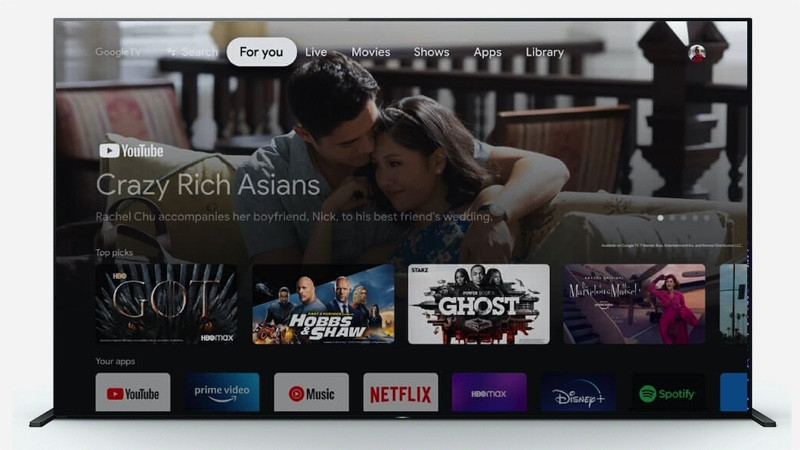
Check out… Sony A90J
As with LG’s latest OLED range, Sony’s new OLED range is built on different core OLED panel hardware, rather than just depending on cosmetic and processing differences. The flagship A90Js benefit from the most premium of the two tiers of OLED panels now available, joining the LG G1 in producing more brightness than their step-down siblings.
In fact, the A90Js deliver a more significant step up in brightness than LG’s G1 series does, at times taking HDR to places it’s never gone before with OLED technology. Couple this enhanced brightness and (since black levels remain as good as we’ve come to expect from OLED) contrast with Sony’s mesmerising new Bravia XR processor, which subtly adjusts pictures to look more in line with how your eyes perceive the real world, and you’ve got pictures that consistently look nothing short of beautiful.
The way the A90J uses its screen as a speaker also helps it deliver excellent sound quality that pushes forward into your room with bags of detail and dynamic range.
The A90J TVs aren’t cheap even by OLED standards, but they’re worth every penny.
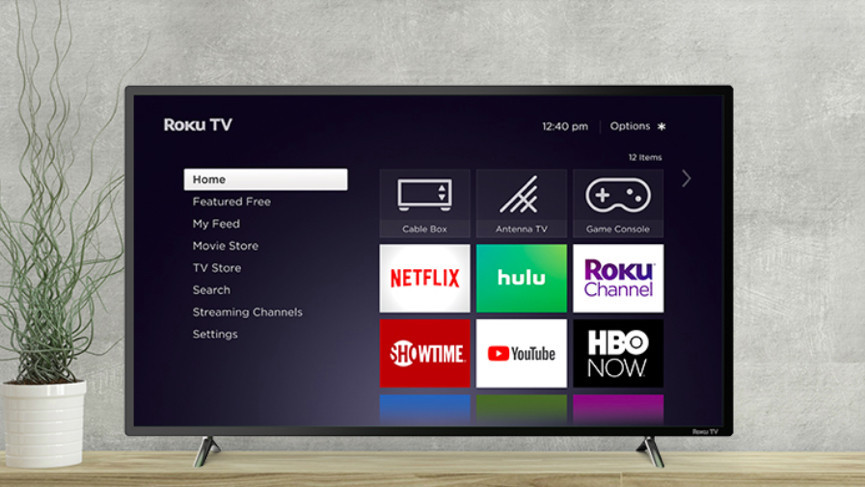
Hisense (Roku/Vidaa/Android TV)
Hisense’s smart TV story is… complicated. Its global range includes sets that use Android TV (complete with Google Assistant voice control) and Roku TV. In the UK, the main platform Hisense uses is its own Vidaa system.
This does a pretty passable job of impersonating Samsung’s Tizen and LG’s webOS platforms – albeit in stripped down form.
A single horizontal bar of icons runs along the bottom of the screen, providing access by default to the key video streaming services in your region. You can add more apps via an easy to find app ‘store’, and it’s child’s play to rearrange the app running order to prioritize your favorites.
The icons are larger than they need to be, meaning you can’t see many on screen at once. But you can scroll through them pretty crisply, and in truth most households only regularly use a handful of video streaming apps anyway.
Vidaa doesn’t currently support as many apps as most rival platforms (or Hisense’s own Roku TVs), with the most high-profile absentees being Disney+ and Apple TV. However, Hisense has told us that these two apps should both be added to the latest ‘Vidaa U5’ TVs by the end of 2021. Netflix, Amazon Prime Video, YouTube, Rakuten and Freeview Play are present and correct already, though – and actually Hisense’s remote controls now typically provide direct buttons for many of these streaming services.
HDR (including, on Hisense’s high-end A9G OLED and U8GQ LCD models, both the Dolby Vision and HDR10+ premium HDR formats) and 4K streaming are supported where a service carries them, and many Hisense models carry built-in Alexa voice control support too.
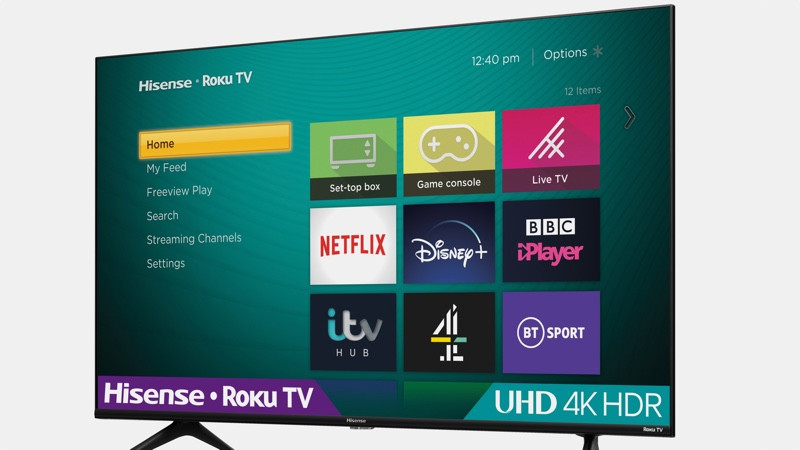
Check out… Hisense A7200 Roku TV
Hisense has launched some seriously high-end TVs in the UK this year, including its first OLED model. For sheer all-round irresistibility, though, we just can’t see past the brand’s latest Roku TVs.
For starters, despite carrying Roku TV, the most comprehensive and, arguably, easiest to use smart system in the TV world right now, the A7200 TVs are unfeasibly great value. The 50-inch R50A7200, for instance, costs just £399.
Making this price look even more awesome is the fact that the A7200s really aren’t bad at all when it comes to picture quality. There’s no Dolby Vision or HDR10+ support, and its HDR performance is inevitably (given how cheap it is) hamstrung by a limited amount of available brightness. It gets as much HDR impact from that limited brightness as it possibly could, though – not least because it’s able to create convincing black colors in dark scenes.
It also gets good value from its native 4K resolution, and thanks to its good contrast, its colors look natural and balanced too.
In short, it’s hard to think of any TV out there right now that gives you more sheer bang for your buck than the Hisense A7200s.
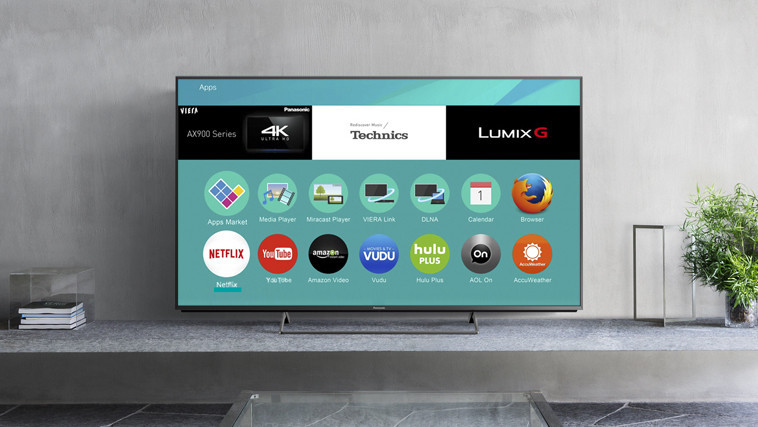
Panasonic (My Home Screen 6.0, Android TV)
Panasonic’s clumsily named smart TV system is much more straightforward to use than it sounds.
As with all the best smart TV platforms these days, it’s built around a home page that consists of a simple row of content platform icon links overlaid (in a shaded box) over the bottom section of the picture. So, you can keep watching TV as you browse.
You can scroll down from the ‘Home’ apps row to reveal other shelves of content providing direct access (in the UK) to recommended shows and videos on the Freeview Play catch up service, Netflix and YouTube, as well as a shelf providing set up options such as adjusting the running order of the GUI shelves.
Panasonic has introduced a handful of improvements for the new (sixth) generation of My Home Screen that’s arriving on its 2021 TVs. For instance, there’s now a My Scenery feature that lets you select a ‘restful’ image or video to play on the TV’s screen when you’re not watching it. Most other premium TV brands have offered similar functionality for some time, though.
Also new for My Home Screen 6.0 is Dual Bluetooth connectivity, which lets the TV transmit sound to two different Bluetooth devices (such as headphones) simultaneously.
The impressively straightforward My Home Screen menu structure has also been tweaked slightly to make it easier to get to the most commonly used picture and sound adjustments, and Panasonic has finally introduced serious voice control options.
Once you get behind this strikingly simple and attractive up-front interface, though, My Home Screen 6.0 system lacks the sophistication and depth of the best rival smart platforms. The Apps market feels pretty old school in its presentation, for instance, and Panasonic doesn’t offer as many apps as most of its big-name rivals. In particular, there’s no support for Disney+, Apple TV or Now TV (meaning you’ll probably want to factor in the cost of an Amazon Fire TV stick or something similar). Panasonic doesn’t make any concerted effort to monitor your viewing habits so it can make content recommendations, either.
At least the streaming services that are supported generally play back in 4K and HDR where available, though. In fact, many of Panasonic’s latest TVs support both of the HDR10+ and Dolby Vision premium HDR formats, rather than just backing one format or the other like most big-name rivals do.
In the end, Panasonic’s My Home Screen platform lacks the content range and intelligence to make it a smart TV A-lister. Though for relatively casual users, there’s a lot to be said for its core simplicity.
Panasonic has announced that it will be turning to Android TV to provide the smart features on some of its more affordable LCD TVs.

Check out… Panasonic JZ2000
Panasonic was the first brand to introduce a high-brightness OLED TV panel, so while LG and Sony have now joined the high-brightness OLED fray, Panasonic’s latest JZ2000 flagship OLED TV still has experience on its side.
In fact, this experience allows the JZ2000 to achieve an extremely high average brightness output of more than 800 nits, versus the not much more than 500 nits you get with regular OLED TVs. It can hit around 1000 nits of brightness for the brightest parts of HDR pictures, too – up from around 800 nit peaks with regular OLED TVs.
These numbers translate into arguably the most consistently bold HDR performance the OLED world has given us to date. Especially when the talents of the panel are so fulsomely unlocked by Panasonic’s latest HCX Pro AI processor.
At the heart of this processor is a desire to deliver pictures that recreate as closely as possible the creative intent of a film or TV show when it was graded in a professional mastering studio. So it’s no surprise to find the JZ2000’s exceptional brightness (for OLED) being married to immaculate black levels and shadow detailing, and gorgeously subtle and balanced colors. Especially if you can feed the TV a Dolby Vision or HDR10+ source (the JZ2000 supports both of the premium HDR formats).
New AI processing can be used to adapt the picture profile to different content types without you having to lift a finger yourself, and the premium pictures are joined by a built-in Dolby Atmos speaker system that adds two new side-firing speakers to the up- and front-firing speakers carried onboard 2020’s HZ2000 model.
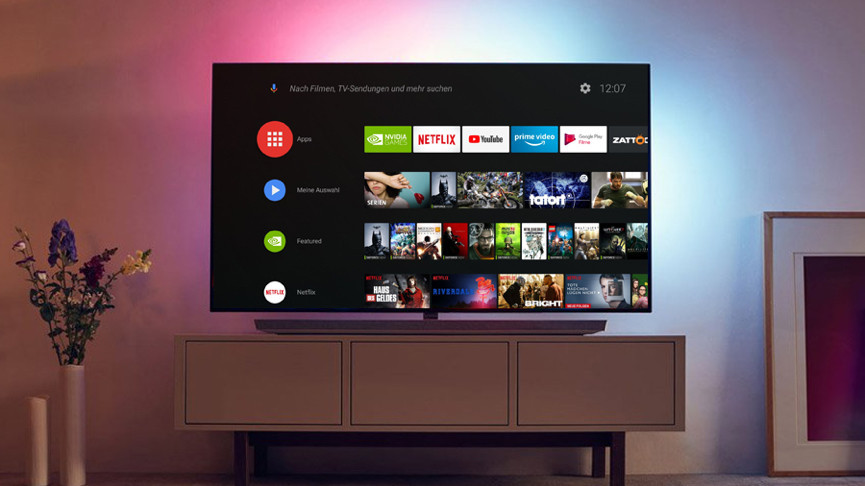
Philips (Android TV/Saphi)
As with Hisense, Philips has a complicated Smart TV story, with the system you get depending on whether you’re buying a high-end or budget set.
Philips’ premium TVs get the Android TV system, which is now up to Version 10 on Philips’ latest sets. This is a step behind the Google TV system now sported by Sony’s latest TVs, but while Philips can’t currently say exactly when it will happen, most of its 2021 TVs currently running Android 10 will eventually get a Google TV firmware upgrade.
Looking at the Android 10 system currently available, though, the first thing to say is that Philips has a reputation for running Android TV more stably than many other brands. This holds good for its latest TVs, as everything, from Android TV’s menus to the TV’s set up menus, runs slickly without crashes or bugs.
As mentioned earlier, Android TV is generally impressive from a content perspective, carrying thousands of apps. Many of these won’t actually be of much interest to many users, in truth, given that most households tend to be interested pretty much exclusively in video streaming services. But at least Android 10 does a better job of prioritising these key video streaming apps than older Android versions used to.
The latest Android TV platform delivers support for Google Assistant voice control and Google Chromecasting, as you would hope.
Android is still far from our favourite smart TV system, though. Its full screen presentation means you can’t keep watching TV while you browse, and presents you with what may be for some users quite a confusing and intimidating home screen.
The relationship between the Android TV interface and Philips’ picture and sound set up menus is unintuitive, too, and options for customising the Android TV home screen, while certainly better than they were when the first Android TVs appeared, are still limited versus the best rival smart systems.
There’s no really useful attempt to recommend relevant content to watch based on your viewing habits either; in fact, recommendations often appear more like adverts/paid for pushed content than stuff you might genuinely want to watch.
Philips has thankfully managed, though, to get round Android TV’s old reluctance to support all the UK terrestrial broadcaster catch up apps by getting Freeview Play onboard. This provides a handy ‘container’ for the likes of the BBC iPlayer, ITV Hub and so on.
The only issues with Philips Android TVs in terms of content, really, are the lack of Dolby Atmos support on the Disney+ app, and the absence at the time of writing of the Apple TV app. Though Philips does expect to be able to add this soon, so it could even be there by the time you’re reading this.
Saphi doesn’t carry as many apps as the best rival platforms (or Android TV), and experiences of it so far have found it a bit sluggish. It’s more than acceptable as a budget TV smart interface, though.
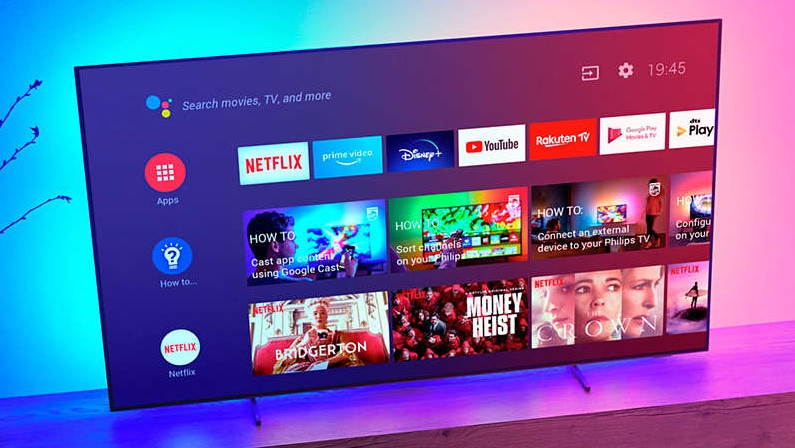
Check out… Philips OLED806
The OLED806 TVs aren’t Philips’ latest flagship OLED models. They are, though, outstanding value for what they offer.
They boast a gorgeous premium design for starters, thanks to a combination of an ultra thin outer edge, exceptionally minimalistic desktop feet that you can barely see when watching the TV straight on, and most striking of all, Philips Ambilight technology. This sees pools of colored light that can be set to match the color content of the image you’re watching spilling forth from all four of the screen’s sides.
Since this is an OLED TV, its pictures naturally benefit from the outstanding local contrast and black level that OLED is renowned for. But the OLED806es also enjoy the latest (fifth) generation of Philips much-admired P5 picture engine, which applies powerful processing improvements to each of what Philips considers the five ‘pillars’ of picture quality: source detection, sharpness, contrast, color and motion. The net result of all this is pictures that can look stunningly sharp and vibrant no matter what content you’re watching.
Philips also provides support for both of the Dolby Vision and HDR10+ premium HDR formats, and its excellent pictures are backed up by a 50W 2.1 sound system that’s much more powerful than you’d imagine possible from such an ultra-thin screen. Not least because the sound is underpinned.
TCL (Android TV/Roku TV)
TCL has gone from being barely a glint in the eye of the UK TV market to a serious player almost overnight, thanks to the introduction of a huge range of models that takes in everything from premium mini LED sets at one end to exceptionally affordable LCD smart TVs at the other.
As with a growing number of brands, TCL deploys two different third party smart platforms in its range. Android TV takes pride of place on premium models such as the mini LED C825K range, while Roku now provides the smarts for TCL’s affordable but still well-specified RP620K LCD TVs.
Since we’ve already covered Android TV and Roku TV elsewhere in this article, there’s no need to go over them again here.
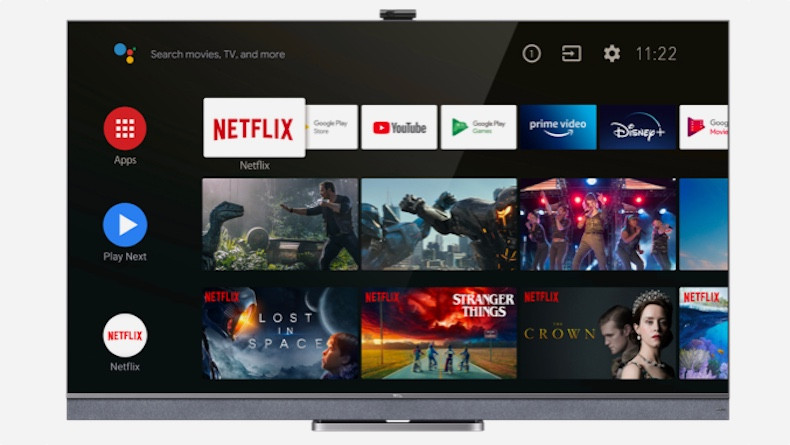
Check out… TCL C825K
TCL’s bid for a slice of the relatively high end part of the TV world, the C825K range, uses Mini LED technology very effectively to enhance both its contrast and color performance. It doesn’t offer as many dimming zones as some rival Mini LED models, such as the previously mentioned Samsung QN95A, so while its black levels are excellent, it’s not quite as good at suppressing backlight clouding or maintaining contrast uniformity. But it’s also the cheapest Mini LED TV range we’ve seen to date by some distance, redefining the sort of contrast you might expect to get from what might in price terms be considered a mid-range TV.
As with almost all of the TVs that have made our recommended list, the TCL C825Ks also sport a surprisingly potent sound system. In this case, this quality audio comes courtesy of a built-in ‘soundbar’ that’s been designed in conjunction with acclaimed audio brand, Onkyo.
Unfortunately the C825K doesn’t join most other premium TVs (including versions of the C825K launched in Europe!) in carrying support for the variable refresh rate and 4K at 120Hz features now delivered by the latest games consoles and PC graphics cards. But for video fans it still in some ways rewrites the mid-range TV rule book.


